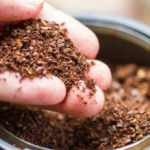If you’re hunting for a houseplant that brings serious style to your space, the zebra plant might be your perfect match. Known for its dramatic, striped leaves and exotic flowers, this plant is more than just a visual treat—it’s a conversation starter.
Because of its unique appearance and slightly tricky temperament, the zebra_plant often appeals to plant lovers who want something a little more special. While it may not be the easiest plant to care for, learning the ropes of zebra plant care can reward you with lush foliage and stunning blooms.
What Is a Zebra Plant?

The name “zebra_plant” actually refers to two different species:
-
Haworthia fasciata – a small, spiky succulent often called haworthia zebra_plant
-
Aphelandra squarrosa – a tropical foliage plant known for broad, shiny leaves with white veins
Though they share the same nickname, these plants are completely different in their structure and care requirements. Let’s break each one down.
Haworthia Zebra Plant (Succulent)
Appearance and Growth
The haworthia zebra_plant is a low-maintenance succulent. It grows in a rosette shape with thick, dark green leaves and white horizontal stripes that resemble zebra patterns.
-
Height: 4–6 inches
-
Spread: 3–5 inches
-
Growth Rate: Slow
-
Flowers: Small, white tubular flowers during late spring
Zebra Plant Care (Succulent Variety)
To help your succulent thrive, follow these simple care guidelines:
-
Light: Needs bright, indirect light or filtered sunlight.
-
Water: Water only when soil is dry—roughly once every 2–3 weeks.
-
Soil: Use well-draining cactus mix.
-
Temperature: Keep it above 60°F. Avoid drafts or sudden temperature drops.
-
Humidity: No additional humidity needed—perfect for dry climates.
With consistent zebra plant care, the succulent version is nearly foolproof and great for beginners.
Aphelandra Zebra Plant (Tropical Foliage Plant)
Eye-Catching Appearance
The aphelandra zebra_plant is famous for its bold, glossy green leaves with white veining and its large yellow zebra_plant flower, shaped like a cone. This flower makes a show-stopping centerpiece but only blooms under proper conditions.
-
Height: 12–24 inches indoors
-
Spread: 12–18 inches
-
Flowering Time: Summer or early fall
-
Bloom Duration: Around six weeks
Zebra Plant Care (Tropical Variety)
Tropical zebra_plant care is a bit more involved, but totally doable with consistency:
-
Light: Bright, indirect sunlight is a must.
-
Water: Keep soil moist but not soggy—usually once a week.
-
Humidity: Requires high humidity (60–70%). Use a humidifier or pebble tray.
-
Soil: Rich, organic potting mix with good drainage.
-
Fertilizer: Use a balanced liquid fertilizer twice a month in spring and summer.
-
Pruning: After flowering, cut back the flower stem and any leggy growth.
How to Care for Zebra Plant: General Tips
Whether you’re caring for the succulent or tropical variety, a few rules remain true:
-
Always check moisture before watering.
-
Avoid direct sunlight—it can burn the leaves.
-
Clean leaves regularly to avoid dust build-up.
-
Don’t let your zebra_plant sit in water—root rot is a risk.
By applying these general tips along with the specific care advice above, you’ll know exactly how to care for zebra_plant in any indoor setup.
Zebra Plant Flower: How to Encourage Blooms
If you’re growing aphelandra zebra_plant, you’ll want it to bloom. Here’s how to make that happen:
-
Provide strong, indirect light during the day.
-
Keep the humidity up consistently.
-
Fertilize regularly during the growing season.
-
Pinch off dead leaves to redirect energy to flower development.
With the right care, you’ll be rewarded with a vibrant zebra_plant flower that lasts several weeks.
Purple Zebra Plant: What Is It?
The term purple zebra_plant can refer to various striped plants with purple hues, but it’s often confused with tradescantia species or even certain haworthia hybrids that develop a deep purplish tint when exposed to bright sunlight.
While not a “true” zebra_plant by botanical definition, these plants carry similar striping, making them a trendy and colorful alternative for collectors.
Zebra Plant Benefits: More Than Just Good Looks
So why should you invest in a zebra_plant? Besides being a visual showpiece, there are practical zebra plant benefits you should know:
-
✅ Air purification: Helps clean the indoor air
-
✅ Mood booster: Plants enhance your mental well-being
-
✅ Conversation starter: Visitors always ask about it!
-
✅ Improves humidity: Great for dry indoor environments
-
✅ Mindful hobby: Teaches you patience and care
Zebra Plant Problems and Solutions
 Like any plant, zebra_plants can develop problems if their needs aren’t met. Here are some common issues:
Like any plant, zebra_plants can develop problems if their needs aren’t met. Here are some common issues:
Leaf Curling or Browning Tips
-
Cause: Low humidity or inconsistent watering
-
Fix: Mist the plant or use a humidifier
Droopy Leaves
-
Cause: Overwatering
-
Fix: Allow soil to dry between watering
No Flowers
-
Cause: Low light or lack of nutrients
-
Fix: Move to a brighter location and fertilize
White Webbing or Dots
-
Cause: Spider mites
-
Fix: Wipe leaves and spray with neem oil
Quick Bio Table
| Feature | Haworthia Zebra | Aphelandra Zebra |
|---|---|---|
| Type | Succulent | Tropical foliage |
| Origin | South Africa | Brazil |
| Light | Indirect sunlight | Bright, indirect light |
| Water | Every 2–3 weeks | Weekly, keep moist |
| Height | 4–6 inches | 12–24 inches |
| Flower | Small white | Bright yellow spike |
| Humidity | Low | High (60–70%) |
| Soil | Cactus mix | Rich organic mix |
| Fertilizer | Monthly (spring/summer) | Bi-weekly (growing season) |
| Ideal Spot | Desk, shelf | Living room, bright corners |
| Difficulty | Easy | Moderate |
| Best For | Beginners | Plant lovers with time |
| Toxicity | Non-toxic | Non-toxic |
Zebra Plant Care Succulent vs. Tropical: Which Should You Choose?
If you prefer easy-care plants, go with the haworthia zebra_plant. It’s nearly indestructible and thrives on neglect. On the other hand, if you’re up for a challenge and want eye-popping foliage with the chance of flowers, the aphelandra zebra_plant will reward you richly.
You can even get both—just remember that their care routines are very different.
Conclusion
In the end, the zebra_plant is a bold and beautiful addition to any plant collection. With a little love and attention—especially if you follow the tips shared here—you can enjoy healthy leaves, striking stripes, and stunning flowers year after year.
Whether you go with a succulent or tropical variety, one thing’s for sure: the zebra_plant is always a head-turner.
FAQs
1. How often should I water my zebra plant?
Water tropical zebra plants weekly; succulents only when soil is dry—about every 2–3 weeks.
2. Is the zebra plant safe for pets?
Yes, both zebra plant types are non-toxic to cats and dogs.
3. Why is my zebra plant not flowering?
It may lack light, nutrients, or consistent humidity. Adjust these to encourage blooming.
4. Can I grow zebra plants in low light?
They prefer bright, indirect light. Low light may stunt growth and prevent flowering.
5. Do zebra plants need repotting?
Yes, repot every 2–3 years or when roots outgrow the pot. Spring is the best time to do it.






